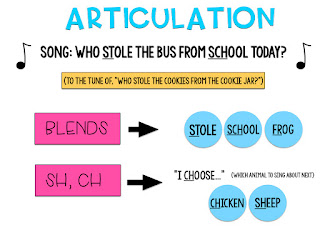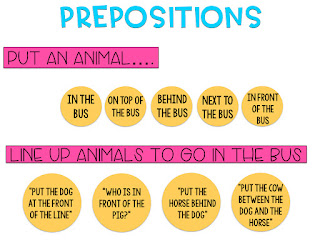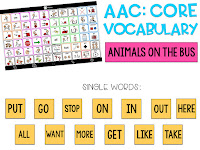I'll walk you through exactly how I run it and all the goals you can hit, below:
Props to collect or print:
-Characters: witch, cat, dog, frog, bird
-Objects: broom, witch hat, bow, wand, pine cone (I legit dug through my Christmas decoration tub in my basement storage room to get one- #dedication), a bone, flower, stick, and a bucket for your "cauldron." I found my black jack-o-lantern bucket at Target for $1, and the witch hat was only $3!
I used a printable witch on a popsicle stick, and plush beanie baby toys for the animals (Looks like my 90s kid obsession paid off, after all... for circle time. Totally worth the small fortune my parents spent, right?).
I used a paint stirrer for the stick, a dog bone toy from a Pet Vet set (but you can find a cheap dog bone chew toy at Target for $1-$2), a princess wand from the Target $1 spot a few years ago, a fake flower (you can find these at any craft store or the Dollar Tree), and a pine cone from my Christmas decor!
My broom was made out of brown construction paper taped together (::cue Iggy Azalea, "Fancy" ::(jk, I actually really hate that song)). You can also search for clip art images for each of these items if you don't have objects available!
Setup:
Give each of the kids a prop to hold ahead of time- this method went MUCH more smoothly than trying to give out props as we read the story. Learn from my mistakes.
The max number of kids I have in a class is 8, so 7 students held an animal or an object that the witch lost, and 1 student held the bucket/cauldron. There are enough unique characters/objects for up to 13 kids, though, if you hand out the witch, the 4 animals, the 3 lost items, the bucket/cauldron, and the 4 items that go in the cauldron.
Activities/Targets:
Actions: I always, always, always try to incorporate actions into our circle time. One- it's just good to be moving and keep their attention, and two- some of my kids on the spectrum have motor imitation goals!
In Room on the Broom, we do actions for...
-the part where the witch "looks around, but no (bow, wand, hat) could be found": we put our hands above our eyes like we're looking out, searching for the item
-tapping the broomstick
-"whoosh" they were gone
-stirring the cauldron
-flying through the air
Receptive ID:
Give your kiddo a field of two choices, ask them to find a specific one, and that's the prop they get to hold.
Following Directions/Social Skills:
I put the broom in front of me while I read the story, with my popsicle witch laying on it. When we got to the parts of the story where an animal found a missing item, whoever was holding the animal had to bring the missing item to the witch on the broom. For example...
Me: "Who has the dog?"
Student: "I do!"
Me: "Find the hat and bring it to the witch"
...And they would then go to whoever was holding the hat to get it and bring it over.
(The frog finds the wand and brings it to the witch. The bird finds the bow and brings it over)
We also work on "put in" directions with the items that go in the cauldron. When all the items are in, everyone gets to stir it up. When their turn is done, they have to either pass it on down the line, or choose a specific friend and tell them it's their turn. Sharing is an important preschool skill! :)
Asking Questions + Core Vocabulary:
If you have kids in your group who are working on ASKING questions, make sure they are holding an animal, so they can come to the witch and say, "Is there room for me?" or "Can I get on?"
If you are modeling AAC with....
LAMP: model..
-"I get on?"
"Down!" (for each time it gets to the, "Down! Cried the witch" part)
"Go" (each time for "whoosh, they were gone")
"In" when putting items in the cauldron
ProLoQuo: from the home screen, model, "I come?" or "I get on?" or, in the "places" folder, you can model, "Can I come?" Also model "go" for each time they fly away
You can also program, "Is there room for me?" or "Down!" onto a Big Mack switch, too.
Pronouns:
-Work on pronoun "she" with the sentences,
"She dropped a..." or "She said 'yes'" (to each of the animals when they asked to join)
Answering "yes":
-I have some kiddos working on answering yes/no without echoing back part of the question. I'll ask them, "What did the witch say?" after the animals ask their question, and I give them the visual model of the ASL sign for "yes" right away to get them to say 'yes' instead of echoing.
Articulation:
This was more during individual therapy using this book, but I have one kiddo working on /w/ and /m/ sounds, so we worked on...
M: room, broom, me
W: Wet, witch, wand, whoosh, wind
This is one of my all-time favorite Halloween books, so I hope this gives you some ideas of how to use it for a whole group circle time lesson! Let me know you'll be using this book this Halloween!





















































